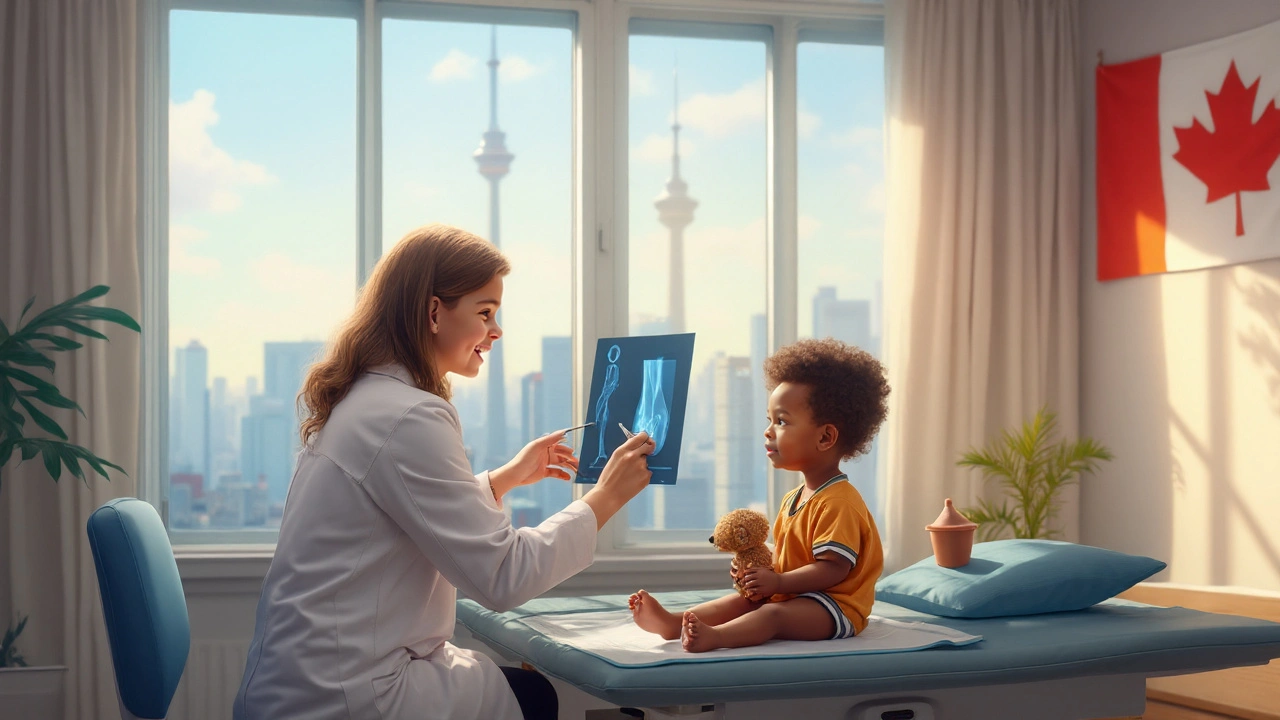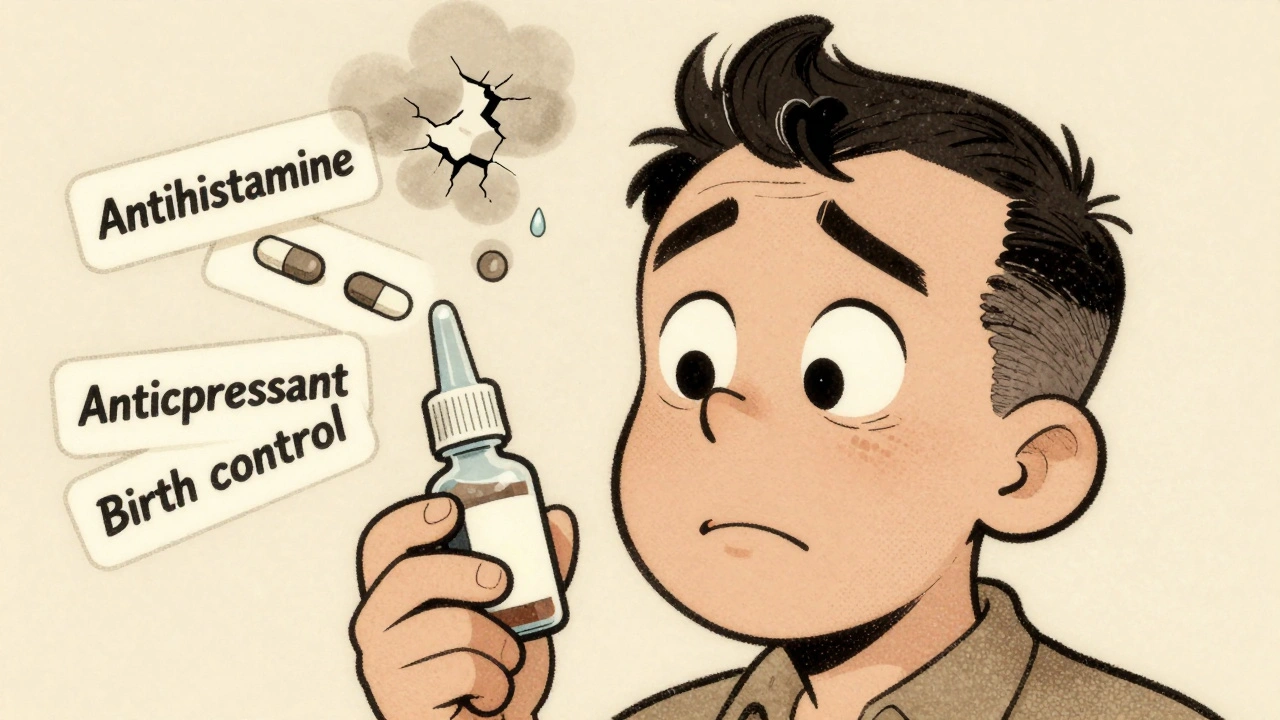Rickets is a childhood disorder of bone mineralization caused primarily by vitamin D deficiency, often compounded by calcium or phosphate shortages. It weakens the growing skeleton, leading to bowed legs, soft skull, and delayed growth. The disease thrives where sunlight is scarce, diets lack dairy, or gastrointestinal disorders impair nutrient absorption.
Why Rickets Targets the Growing Skeleton
The skeletal system is a living network of bone cells, blood vessels, and hormones. In kids, the growth plate (the zone of cartilage at the ends of long bones where new bone is laid down) is the epicenter of rickets. When calcium and phosphate are unavailable, osteoblasts (cells that lay down new bone matrix) can’t harden cartilage into bone, leaving the plate soft and prone to deformation.
Key Players Behind the Disease
- Vitamin D deficiency (insufficient levels of cholecalciferol or its active form, calcitriol) reduces intestinal calcium absorption.
- Calcium deficiency (low dietary calcium intake or poor gut uptake) directly limits the mineral pool needed for bone.
- Phosphate deficiency (low serum phosphate often caused by renal losses) hampers hydroxyapatite crystal formation.
- Parathyroid hormone (PTH) (regulates calcium‑phosphate balance; excess PTH worsens phosphate loss) can become overactive in response to low calcium.
- Sunlight exposure (ultraviolet B rays that synthesize vitamin D in skin) is the natural source many children miss in high‑latitude climates.
Comparing Rickets, Osteomalacia, and Normal Bone Development
| Aspect | Rickets | Osteomalacia | Healthy Bone |
|---|---|---|---|
| Typical Age | Infants‑children | Adults | All ages |
| Primary Cause | Vitamin D & mineral deficiency | Vitamin D deficiency (often chronic) | Balanced nutrition & hormones |
| Growth Plate Status | Soft, widened, leading to bowing | Not applicable (growth plates closed) | Normal ossification |
| Lab Markers | Low serum calcium/phosphate, high alkaline phosphatase, low 25‑OH‑D | Low 25‑OH‑D, high alkaline phosphatase, normal calcium | Within reference ranges |
| Treatment Focus | Vitamin D & calcium supplementation, sunlight | High‑dose vitamin D, address underlying malabsorption | Maintain balanced diet & active lifestyle |
How the Disease Manifests: Signs Parents Should Watch For
Early detection saves a child from permanent deformities. Look for:
- Bow‑shaped legs or knock‑knees that appear after the first year.
- Soft skull (especially in infants), leading to a “pseudofracture” feel.
- Delayed walking or frequent falls.
- Dental enamel defects - teeth appear yellowed or brittle.
- Muscle weakness or irritability during growth spurts.
When any of these appear, a pediatrician will order a blood panel that checks serum 25‑hydroxyvitamin D (the main circulating form of vitamin D used to assess status), calcium, phosphate, and alkaline phosphatase.

Managing Rickets: From Diagnosis to Recovery
Treatment hinges on three pillars: nutrient repletion, safe sunlight, and monitoring.
- Vitamin D supplementation: Standard regimens prescribe 2,000-5,000 IU daily for 6-12 weeks, then a maintenance dose of 400-1,000 IU.
- Calcium intake: Age‑appropriate dairy or fortified alternatives provide 1,000-1,300mg of elemental calcium per day.
- Sunlight therapy: Fifteen minutes of midday sun on uncovered arms and face, 2-3 times weekly, works well in latitudes below 45°.
- Address underlying conditions: Celiac disease, cystic fibrosis, or chronic kidney disease may need specific medical management.
- Follow‑up imaging: X‑rays of the wrists and knees show reduced metaphyseal widening after 3-6 months of therapy.
Most children recover fully if treatment starts before the growth plates close.
Related Concepts Worth Exploring
Understanding rickets opens doors to a broader view of bone health:
- Osteoporosis (age‑related loss of bone density leading to fracture risk) shares the mineral deficiency pathway but occurs in adults.
- Bone remodeling (the continuous cycle of bone resorption and formation) explains why nutrient repletion can reverse early changes.
- Parathyroid hormone (key regulator of calcium mobilization from bone) becomes a therapeutic target in severe cases.
- Hypophosphatemic rickets (a genetic form where phosphate wasting drives the disease) highlights the need for genetic testing in refractory cases.
- Nutrition education (strategies to improve diet quality in at‑risk populations) is a public‑health lever to prevent the disorder.
Key Takeaways
- Rickets is a preventable disease that attacks the growth plate during childhood.
- Vitamin D, calcium, and phosphate are the essential trio for healthy bone mineralization.
- Early signs include bowed legs, soft skull, and delayed motor milestones.
- Effective treatment combines supplementation, sunlight, and management of underlying conditions.
- Long‑term monitoring ensures bones regain strength before growth plates close.
Frequently Asked Questions
Can rickets be cured completely?
Yes, most cases resolve fully if caught early. Adequate vitamin D and calcium restore normal growth plate function, and deformities often improve within months of therapy. Late‑diagnosed cases may need orthopedic surgery to correct lingering bone angulation.
How much sunlight is enough for vitamin D synthesis?
For children living below 45° latitude, 10-15 minutes of midday sun on arms and face, 2-3 times per week, usually produces 5,000-10,000 IU of vitamin D. Darker skin, sunscreen, or cloud cover requires longer exposure or supplementation.
What lab tests confirm rickets?
Key markers are low serum 25‑hydroxyvitamin D, low calcium or phosphate, elevated alkaline phosphatase, and sometimes high parathyroid hormone. X‑ray of the wrist shows widened metaphyses with cupping.
Is rickets only a problem in developing countries?
While prevalence is higher in low‑income regions due to poor nutrition, cases also arise in affluent societies where exclusive breastfeeding without vitamin D drops, limited outdoor time, or malabsorption disorders occur.
Can dietary supplements replace sunlight?
Supplements can achieve adequate vitamin D levels, but sunlight also stimulates nitric oxide production and improves mood. For children with skin conditions or severe allergies, high‑dose vitamin D drops become the primary source.
What is hypophosphatemic rickets and how does it differ?
Hypophosphatemic rickets is a genetic disorder where the kidneys waste phosphate, leading to low serum phosphate despite normal vitamin D. Treatment uses phosphate supplements and active vitamin D analogs, not just sunlight.






Idolla Leboeuf
My cousin in Detroit got rickets from being indoors all day and drinking almond milk instead of cow's milk. No one told her mom to supplement. Now she’s 12 and still wears leg braces. This isn’t some third-world problem-it’s a parenting blind spot.
Danny Pohflepp
Let’s be clear: the pharmaceutical-industrial complex profits from vitamin D deficiency diagnoses. The CDC quietly reduced sunlight exposure recommendations in the 90s to drive supplement sales. Look at the correlation between sunscreen use and rickets spikes. Coincidence? Or calculated obsolescence of natural biology?
Cole Brown
Hey, I just want to say-this is super important info. If you're a parent, please talk to your pediatrician about vitamin D. It’s not expensive, it’s not complicated, and it can change your kid’s life. I’ve seen it firsthand. Don’t wait until the legs bend.
Kyle Buck
While the classical presentation of rickets is well-documented, the molecular pathophysiology involving FGF23 dysregulation in hypophosphatemic variants remains underappreciated in primary care. The osteoblast-osteoclast coupling disruption via impaired hydroxyapatite nucleation is a fascinating example of endocrine-osteological crosstalk. Further, the epigenetic modulation of VDR expression in populations with chronic low UVB exposure warrants longitudinal study.
Dave Collins
Oh wow. A whole 2000-word essay on how to not let your kid turn into a human question mark. Did we really need a 12-page PDF to learn that sunlight + milk = not crooked bones? I mean, my grandma knew this in 1947. Thanks for the 2024 infographic, Dr. Google.
Elizabeth Nikole
My sister’s kid had rickets. She was vegan. No dairy. No supplements. Said she "trusted nature." Now the child has scoliosis. And the mom still posts about "pure living" on Instagram. 🤡
LeAnn Raschke
This is such a helpful breakdown. I’m a nurse and I see so many parents who don’t know the signs. Thank you for explaining it so clearly. If you’re reading this and you’re unsure-just ask your doctor. It’s better to check than to wait.
Suresh Patil
In India, we used to call this "bowed legs disease." Grandmothers would put kids in the sun every morning. No pills. Just sunlight and dal. Modern medicine forgot the wisdom of simple things.
Ram Babu S
My nephew in Kerala got diagnosed at age 3. We started giving him milk, eggs, and 15 minutes of sun every day. After six months, his legs straightened. No surgery. Just food and light. This is not rocket science.
Adorable William
Interesting how the CDC and WHO both promote vitamin D supplements… while simultaneously banning cod liver oil in schools. Coincidence? Or is this about controlling nutrient access? The real question: who benefits when children become dependent on synthetic D3 instead of natural sunlight and ancestral diets?
Amy Craine
Just to add-hypophosphatemic rickets is often misdiagnosed as classic rickets. The key is phosphate levels and FGF23 testing. If supplementation doesn’t help, don’t just up the vitamin D. Run the full panel. Many kids get stuck in a loop of "treatment failure" because no one checks the right markers.
Halona Patrick Shaw
My kid got rickets. We thought it was just "growing pains." Turns out, we were living in a cave. We started giving him vitamin D drops and taking walks at noon. Within 3 months-he was running. I cried. Not because of the diagnosis… but because it was SO EASY to fix. Why didn’t anyone tell us?